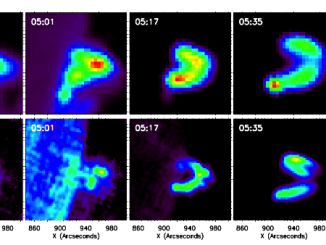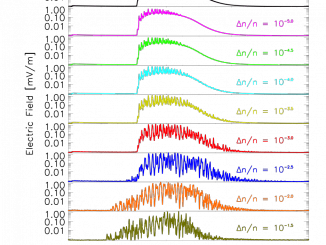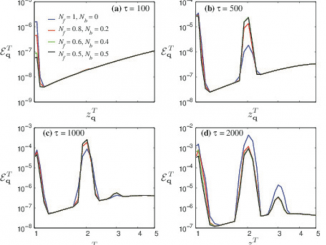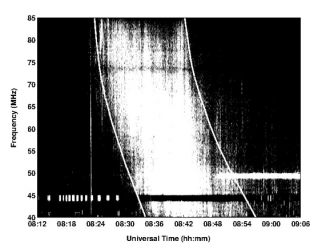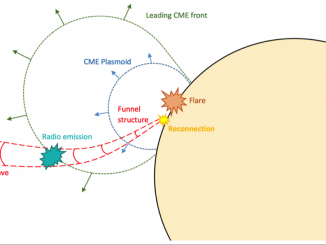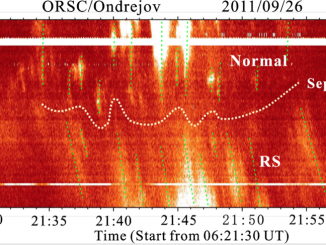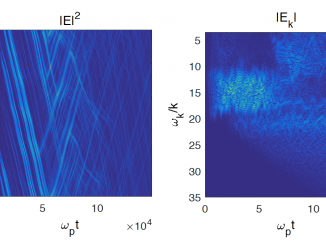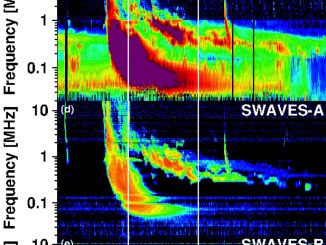Quasi-periodic acceleration of electrons in the flare on 2012 July 19
by Jing Huang et al.*
We study the quasi-periodic pulsations (QPPs) of nonthermal emission in an M7.7 class flare on 2012 July 19 with spatially resolved observations at microwave and HXR bands and with spectral observations at decimetric, metric waves. Microwave emission at 17 GHz of two footpoints, HXR emission at 20–50 keV of the north footpoint and loop top, and type III bursts at 0.7–3 GHz show prominent in-phase oscillations at 270$\,$s. Through the […]

